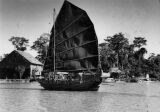
A Junk sails past the river camp
Note: Hanger with windsock and S-39 in background.
Camp Abai, Borneo - 1935/36
Photo: Martin and Osa Johnson Safari Museum

A Junk and the S-39 alongside the riverbank.
Note: People in shadow of wing.
Camp Abai, Borneo - 1935/36
Photo: Martin and Osa Johnson Safari Museum
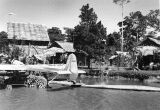
The S-39 alongside the riverbank.
Note: People in shadow of wing.
Camp Abai, Borneo - 1935/36
Photo: Martin and Osa Johnson Safari Museum
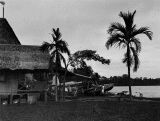
The Spirit of Africa and Borneo on dry land.
Camp Abai, Borneo - 1935/36
Photo: Martin and Osa Johnson Safari Museum
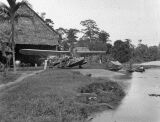
The S-39 with engine running.
Camp Abai, Borneo - 1935/36
Photo: Martin and Osa Johnson Safari Museum

The S-39 parked on the ramp.
Camp Abai, Borneo - 1935/36
Photo: Martin and Osa Johnson Safari Museum

A proud pilot points at the Pratt and Whitney Eagle
Camp Abai, Borneo - 1935/36
Photo: Martin and Osa Johnson Safari Museum
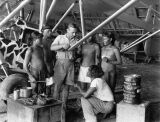
Jim Laneri and Helpers repair the S-39 after the ramp collapsed.
Note: Float has been removed.
Camp Abai, Borneo - 1935/36
Photo: Martin and Osa Johnson Safari Museum

Fueling the S-39.
Note: Shammy cloth filter inside funnel.
Camp Abai, Borneo - 1935/36
Photo: Martin and Osa Johnson Safari Museum
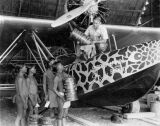
Fueling the S-39.
Note: The labels on the fuel cans always seem to face the
camera. Also, note the right side nose art.
Camp Abai, Borneo - 1935/36
Photo: Martin and Osa Johnson Safari Museum
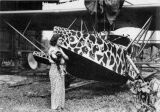
The S-39, Osa and a pet inside the hanger.
Note: Cover on engine.
Camp Abai, Borneo - 1935/36
Photo: Martin and Osa Johnson Safari Museum
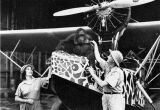
The Johnson's with another pet and the S-39 inside the hanger.
Note: Oil Cooler Installation and open cabin door.
Camp Abai, Borneo - 1935/36
Photo: Martin and Osa Johnson Safari Museum
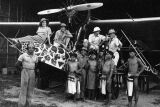
The Johnson's, ground crew and Muruts pose inside the Hanger.
Camp Abai, Borneo - 1935/36
Photo: Martin and Osa Johnson Safari Museum

The Johnson's pose with Muruts and the S-39 inside the Hanger.
Camp Abai, Borneo - 1935/36
Photo: Martin and Osa Johnson Safari Museum

The S-39's nose art.
Note: Pin Striping around letters.
Camp Abai, Borneo - 1935/36
Photo: Martin and Osa Johnson Safari Museum
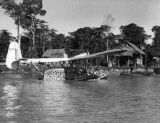
The "Spirit of Africa and Boreneo" alongside Camp Abai.
Camp Abai, Borneo - 1935/36
Photo: Martin and Osa Johnson Safari Museum
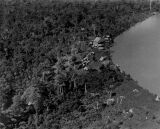
An aerial view of Camp Abai
Borneo 1935/36
Photo: Martin and Osa Johnson Safari Museum

The "Spirit of Africa and Borneo" flies over Camp Abai.
Note: Houseboat under construction in foreground.
Camp Abai, Borneo - 1935/36
Photo: Martin and Osa Johnson Safari Museum